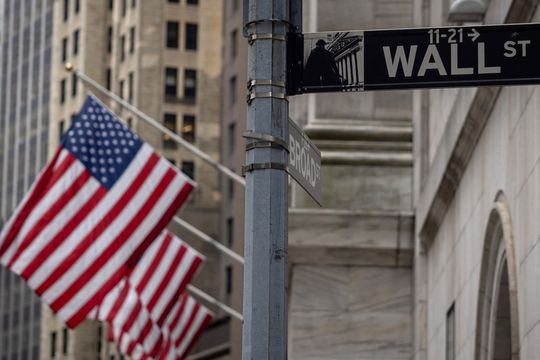The Dow Jones Industrial Average finished in a bear market on Monday for the first time in more than two years and the S&P 500 fell below its June closing low as investors fretted over a combination of interest-rate, currency and economic risks.
What happened
- The Dow Jones Industrial Average DJIA, -1.11% finished down by 329.60 points, or 1.1%, at 29,260.81. It closed below the 29,439.72 level that marks a 20% pullback from its Jan. 4 record close, meeting widely used criteria for entering a bear market. The last time the Dow entered a bear market was on March 11, 2020; it exited on March 26 of that year.
- The S&P 500 SPX, -1.03% finished down by 38.19 points, or 1%, at 3,655.04 — below its June 16 closing low of 3,666.77.
- The tech-heavy Nasdaq Composite COMP, -0.60% finished down by 65 points, or 0.6% at 10,802.92.
Stocks fell sharply last week, with the Dow down 4% and ending Friday at its lowest level since November 2020. The S&P 500 fell almost 4.7% and the Nasdaq Composite dropped 5.1% last week.
What drove markets
Stocks came under pressure Monday on worries about rising borrowing costs, while the surging dollar continued to wreak havoc around the world.
The ICE U.S. Dollar Index DXY, -0.25% started the week by topping 114, its highest level since 2002. The 10-year Treasury TMUBMUSD10Y, 3.884% yield, which began the year around 1.6%, soared to 3.878% on Monday — its highest level since April 2010 — as six-month through 30-year rates all moved either closer to or above 4%.
Meanwhile, all three major U.S. stock indexes added further to this year’s double-digit losses. The benchmark S&P 500, which is down 23% this year, had dropped 4.7% last week when the Federal Reserve stressed it would continue hiking interest rates aggressively to damp inflation near 40-year highs.
“This is a very dangerous period of time for markets across the board,” said Gregory Faranello, head of U.S. rates at AmeriVet Securities in New York. “Financial conditions are tightening extremely rapidly — whether it’s dollar strength, credit spreads, or equities. Real interest rates in the last couple of weeks are moving extremely aggressively higher, which will ultimately have economic repercussions.”
“Liquidity is drying up very rapidly here, too,” Faranello said via phone.
Globally, many central banks are getting more hawkish at a time when a lot of economies, particularly in the U.S. and Europe, are turning weaker, said Tom Graff, head of investments for Facet Wealth in Baltimore, which manages more than $1 billion. “And we might only be getting near the beginning of understanding what this economic slowdown will mean,” he said.
Adding to the general market angst are sharp moves in the currencies and fixed incomes of those countries where concerns about fiscal imprudence are building.
In Asian trading, the British pound GBPUSD, 0.54% hit a record low versus the greenback of under $1.04 after investors reacted negatively to last week’s debt-funded tax-slashing budget. It later recovered, but 10-year gilt TMBMKGB-10Y, 4.281% yields surged 45 basis points to 4.282%. Italian 10-year government bond TMBMKIT-10Y, 4.552% yields hit a roughly 10-year peak above 4.5% after a far-right coalition won the country’s election.
A dollar that’s now trading at a 20-year high, along with a British pound that has plummeted to a record low against the dollar, are contributing to all the worries in financial markets, Graff said via phone on Monday.
“Why would currency volatility in the U.K. matter much in the U.S.? It’s contributing to the risk-off sentiment. Currencies have far-reaching effects and the worry is that there could be an accident,” in which something breaks in financial markets and creates a more severe economic downturn, Graff said. “A much stronger dollar has a direct impact on U.S. earnings,” and a U.K. currency that has dropped as much as it has in a matter of two days “doesn’t normally happen in developed markets.”
However, Jonathan Krinsky, chief market technician at BTIG, wondered whether the S&P 500’s SPX, -1.03% retreat back to just under its June lows should attract investors. The good news is that “in the near-term, we are much closer to a tradable bottom than we were at 3,900,” Krinsky wrote in a note.
Technical factors may also support stocks for the short term. Krinsky noted that the 200-week average of 3,585 may provide a floor.
Meanwhile, investors heard from a number of Federal Reserve officials on Monday. Susan Collins, the new president of the Boston Fed, said that while there’s a possibility of a significant downturn, there is a chance such a dire outcome can be avoided. Atlanta Fed President Raphael Bostic said the Federal Reserve hasn’t lost credibility with the broader public.
Companies in focus
- Shares of PG&E Corp. PCG, +1.11% finished up by 1.1% after the California-based utility was added to the S&P 500 index a little more than two years after emerging from bankruptcy. Late Friday, S&P Dow Jones Indices said PG&E would replace Citrix Systems Inc. CTXS, +0.05% in the benchmark index, as Citrix is being acquired by affiliates of Vista Equity Partners and Evergreen Coast Capital Corp.
- Shares of AMC Entertainment Holdings Inc.’s preferred equity units APE, -5.87%, known as “APEs,” closed down by 5.9% on Monday, while the company’s common stock AMC, -14.52% finished ended 14.5% lower after the company unveiled plans to sell up to 425 million APEs.

